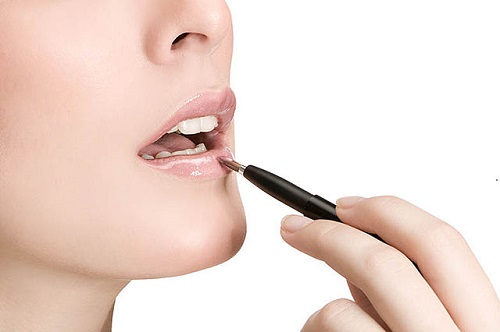Difference between lip gloss and lip glass
From Crushed Cochineal To Lanolin Shine
From the beginning of time, women wanted to be beautiful. One of the mainstays of a make up kit is the lipstick. Under lipstick fall a number of different substances used to adorn the female lips. One of the more modern versions of lipstick is the lip-gloss. Max Factor, a Jewish immigrant from Poland, invented it a long time ago for actresses in black and white movies. Since its early days, it has come a long way. The latest addition to lipsticks is the so-called lip glass named after the glass-like effect it produces.
The origins of make-up reach back far in time. Already in Mesopotamia women ground precious stones and mixed the powder with oil to adorn their lips. The Egyptians used crushed Kermes vermilio, a scale insect. Like the name says, this insect produces a bright red color. It is related to the cochineal scale, both part of the order that entomologists call ‘true bugs’, no kidding. The cochineal lives on prickly pear cacti. Plantations of these cacti in Peru and the Canary Islands produce most of the cochineal used in lipsticks today. The same color gives Campari its bright red hue. From the Egyptians lip color made its way to the ancient Greeks and Romans. The prude Catholic Church made the lipstick almost a forgotten accessory until Queen Elizabeth I. revived it.
Fewer pigments than regular lipsticks
Today, women can choose from an amazing array of lipsticks and lines between categories are often blurred. Lip-gloss is known since 1930, when Max Factor created it for actresses. In black and white movies, contrast was more important than color. Until today, lip-gloss contains fewer pigments than regular lipstick. It is either transparent or slightly opaque. The main purpose of lip-gloss is to give the lips a glossy surface – hence its name. Lip gloss is the ideal lip color for young girls that want to wear some make up but shy away from intense colors.
Max Factor released the first commercial lip gloss called “X-Rated” in 1932. Women all over the USA wanted to look like their favorite movie stars and Max Factor delivered his product successfully through the years. Although he died in 1938, his son Frank changed his name to Max not to disturb the business. Max Factor remains one of the leading companies of the make up industry. They broke barriers by depicting a man almost kissing a woman in their early lipstick campaigns.
Lanolin and jojoba oil for soft lips
Lip-gloss has remained one mainstay of Max Factors collection. Today, it is available in an almost indefinite variety and used as much as regular lipsticks. It mostly comes in a small bottle and is applied with a so-called doe foot applicator. Many times it comes with a built-in lip brush or also in a soft plastic tube that can be squeezed while passing it over the lips.
The principal component of lip-gloss is lanolin, a fatty substance found in sheep’s wool, and polybutene, a sticky substance used in cosmetics. Unlike lipstick, lip-gloss does not last very long. It had to be re-applied frequently.
Lipglass, on the other hand, creates a glass like shine that lasts for a long time. The Canadian company MAC Cosmetics invented lip glass a few years ago. This unique kind of lip-gloss comes in a variety of colors. It can impart subtle or dramatic color. Jojoba oil, one major component of lip-glass, helps to soften the lips.
From a kitchen in Toronto all over the world
MAC Cosmetics was founded in Toronto because makeup artist and photographer, Frank Toskan, and beauty salon owner, Frank Angelo were frustrated with the available make up. They missed colors that would shoot well – so they created their own. At first, they cooked up the cosmetics in their kitchen and sold them from the hair salon. In 1984, the two Franks launched the line from a single counter in a department store in Toronto. Today, MAC is mostly owned by Estée Lauder and sells its products all over the world.
- Difference Be Garam and Tandoori - February 29, 2016
- Difference Between Pasta sauce and pizza sauce - February 23, 2016
- Difference between Marinara and pizza sauce - February 23, 2016
Search DifferenceBetween.net :
Leave a Response
References :
[0]https://en.wikipedia.org/wiki/Lip_gloss
[1]https://www.maccosmetics.com/product/13853/309/Products/Makeup/Lips/Lip-Gloss/Lipglass
[2]http://www.webmd.com/beauty/lips-smile/lip-color-products
[3]http://www.lipstickhistory.com/lipstick-history/lip-gloss-history/
[4]http://www.newyorker.com/magazine/2008/09/01/makeup-and-make-believe
[5]http://www.debenhams.com/webapp/wcs/stores/servlet/prod_10701_10001_123443805899_-1
[6]http://www.temptalia.com/product/mac-cosmetics-lipglass
[7]http://www.lipstickhistory.com/
[8]http://jezebel.com/5041399/max-factor-the-man-behind-the-makeup
[9]http://jezebel.com/5041399/max-factor-the-man-behind-the-makeup
[10]http://www.maccosmetics.jobs/mac/our-history.html

